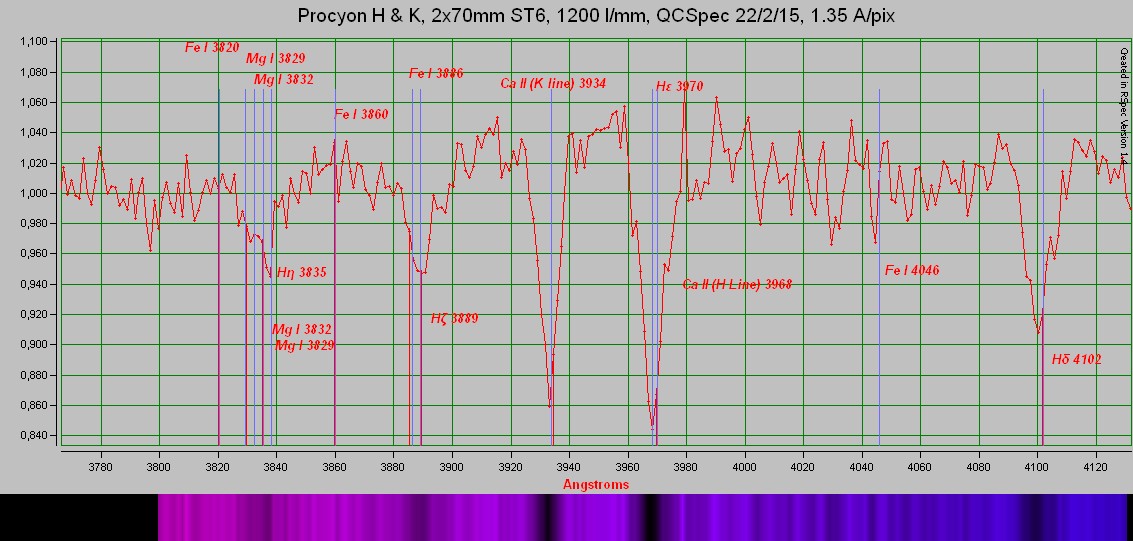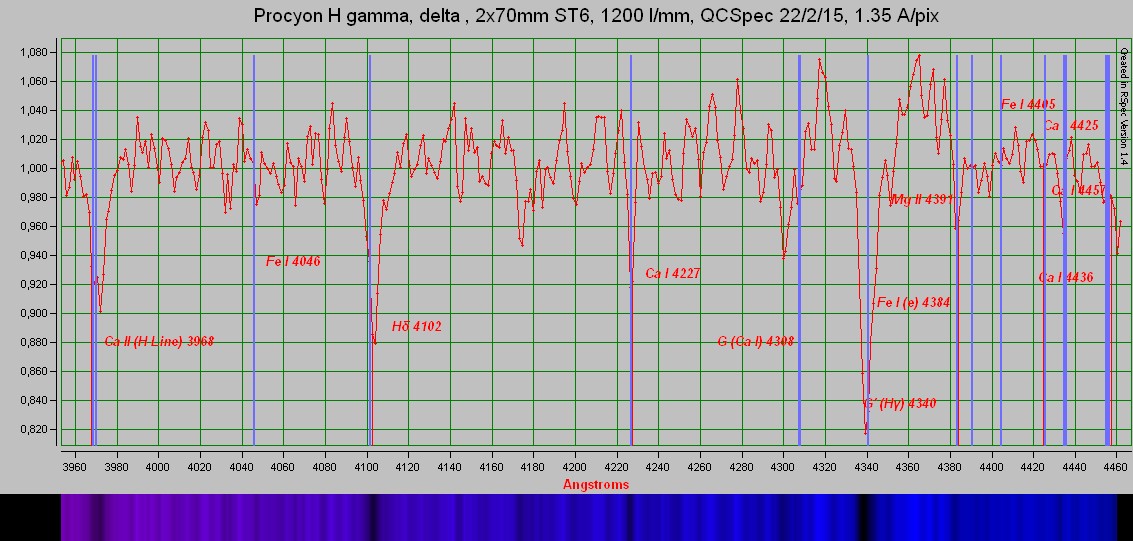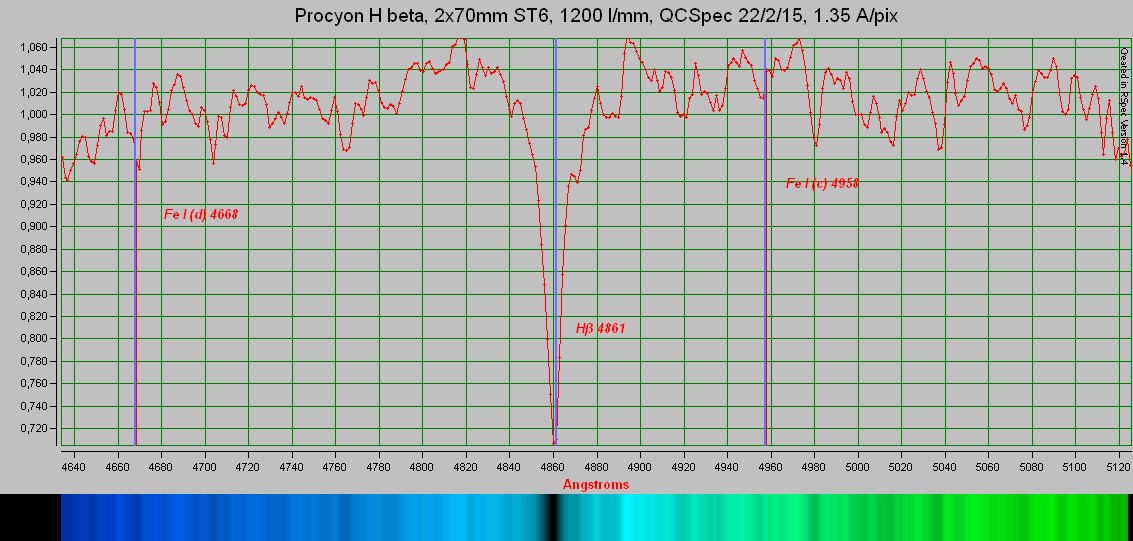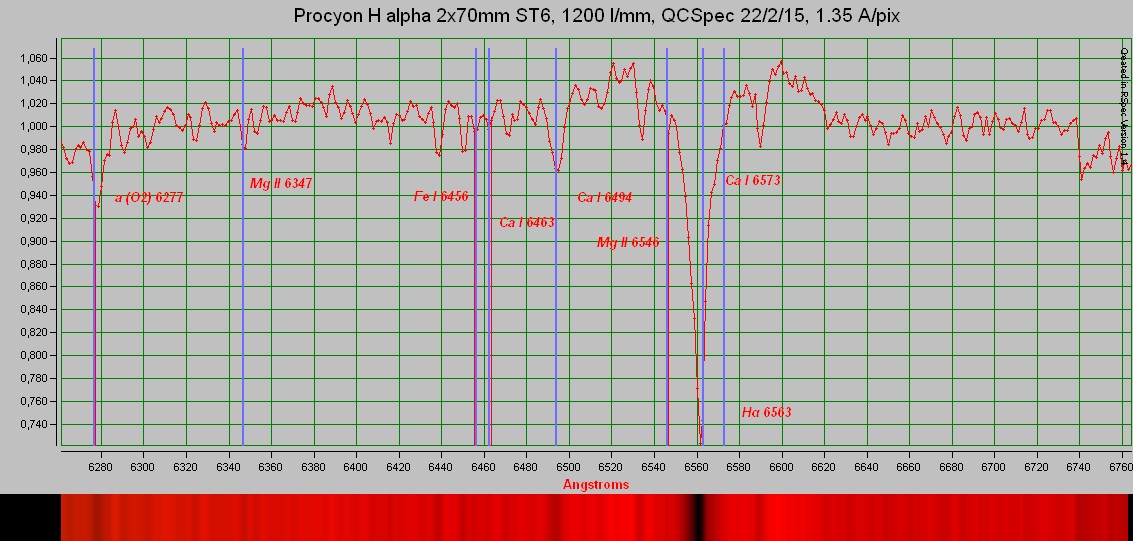Procyon in high resolution from violet to red
Procyon in Canis Minor is one of the brighter stars in the sky, and so it is suitable for high resultion spectroscopy with a 1200 lines/millimeter grating, at 140 mm objective focal length, and CCD. Procyon is an F star, that is just about to leave the main sequence. The hydogen lines are stronger in the F-type than in the G-type Sun, and the metal lines are numerous, as in the Sun. The hydrogen lines are detectable with the CCD also in the 380 nm range, in the near ultraviolet. The Calcium lines are strong, and Calcium is also visible in the red, near Hydrogen alpha. A characteristic feature of F-stars is the G-band of the CH molecule and the Hydrogen gamma as strong features side by side near 430 nm.
The spectra below have been normalized (divided) by the smoothed background continuum, so that they appear flat. Each spectrum is a result of adding 10 to 20 CCD exposures of 20 seconds. The slit widtrh was about 20 microns, resulting is a spectral resolution of 1 to 1.5 Angstroms. At 2x70 mm = 140 mm objective focal length, the sampling rate was about 1.36 Angstroms per pixel with the ST6 CCD (relatively large pixels), so this is a bit undersampeled. The spectral range was about 360 A. (With 2x190 mm the sampling rates is 0.61 A, with 1200 lines/mm, with spectral range of about 200 A). The Canon DSLR camera would have resulted in higher sampling frequency for the same optics, but at a much reduced sensitivity compared to the CCD. The spectra were smoothed by a 3 point running average to suppress noise, so that reduces the resolution a bit further. This is however sufficient to identify numerous elements. The line library in the R-spec software by Tom Field was used.

In the Ca H-K region, starting from Hydrogen eta, and zeta.
 In the G-band region, from Ca II H, Hydrogen detlta, Ca I 4227, G band of CH at 4300, and Hydrogen gamma.
In the G-band region, from Ca II H, Hydrogen detlta, Ca I 4227, G band of CH at 4300, and Hydrogen gamma.

In the Hydrogen beta region. Hydrogen beta is the strong line. Some strong features in addition (unidentified so far).

In the Hydrogen alpha region, starting at the Telluric Oxygen line at 6277 A, through Ca I 6494, through Hydrogen alpha.